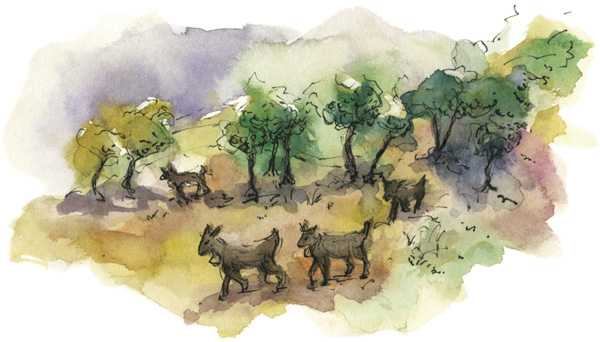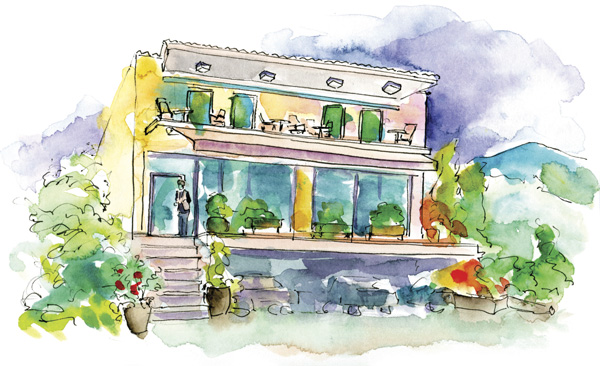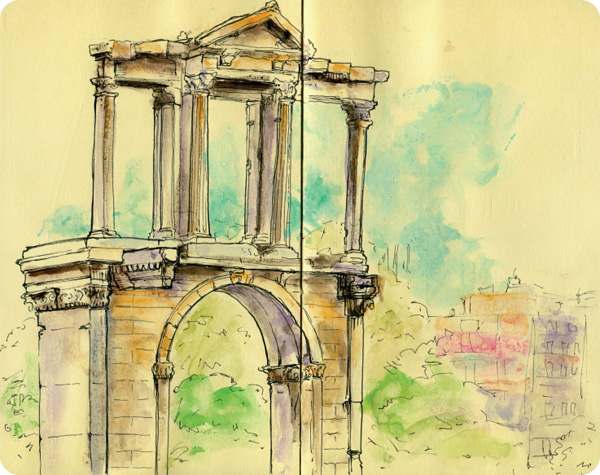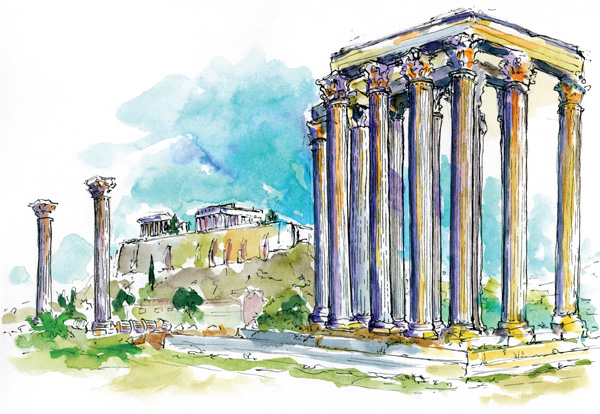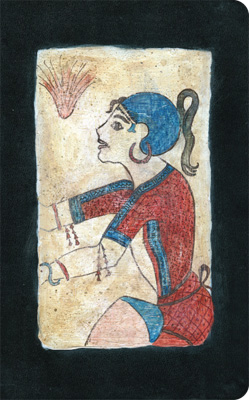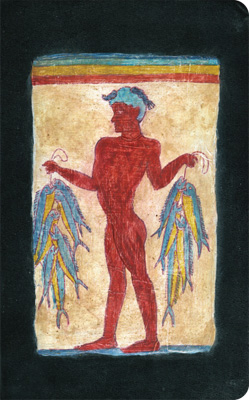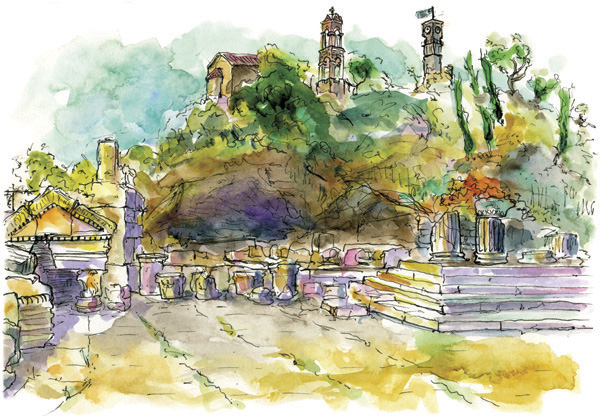
Today we are renting a car to travel on the mainland for several days. It seems too soon to leave Athens since I’ve not painted much, but with so much of Greece left to see, we must move on. After making a few wrong turns to get out of the city, we finally make our way to Eleusis, but it will close earlier than we expected, at 3 pm, so we only have an hour and a half. Scouring the site by foot, I’m having difficultly finding a good subject to draw. Overall, the site isn’t a bad place to sketch, but there isn’t a tall structure like a temple for example, to compose a picture around. Most of the site contains ruins only a couple of feet high. I’m beginning to think Athens spoiled me. Finally, I choose a place near the entrance. At this angle, I have architectural ruins in the foreground with the entrance to the Underworld, a grotto, in the background.
While I start blocking in the larger shapes on my paper, my dad checks in, and reminds me of the mythology of Eleusis. It was here in primordial time that Hades sprang from the ground in his horse-drawn carriage to kidnap Persephone, the daughter of divine Demeter, taking her through the Gates of Hades (the grotto) and into to the Underworld to serve as its Mistress. Eleusis was also the site of the ancient Mysteries, during which Demeter’s search for her kidnaped daughter was reenacted. Every fall at this time of year, as many as a thousand people from all over the ancient world were initiated into the Mysteries. During the ceremony, the initiates witnessed an epiphany exposed by a blinding flash of light. The essence of the epiphany was kept secret under punishment of death, and even today remains unknown. Once initiated, and later reaching the end of their mortal lives, they passed into the Elysian Fields, where they lived out eternity in Persephone’s care and in the presence of the gods.
Just before I finish my painting, a guard tells us that the site is closing in a few minutes. What a quick hour and a half. I have just enough time to gather my belongings and drag them outside the gate. Once there, I put the finishing touches on my painting, and use a cardboard folder as a fan to hasten the drying time. Luckily, I’m traveling with two watercolor blocks so that while one painting is drying, I can start a new one. If I could only find the time to paint two paintings instead of one at each location, I’d be doing great. But today is not that day since we are already back on the road and headed to our next destination, Mycenae.

